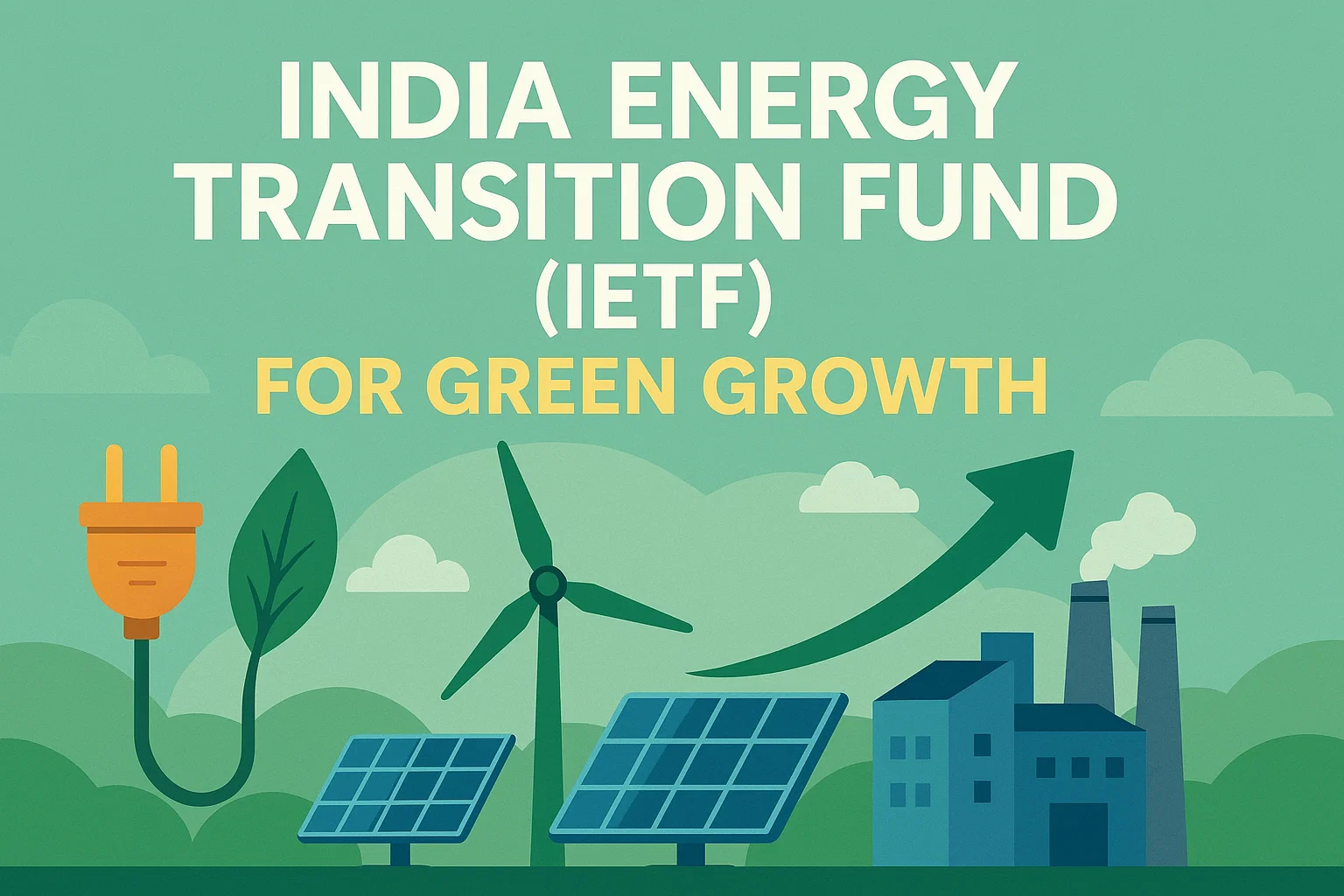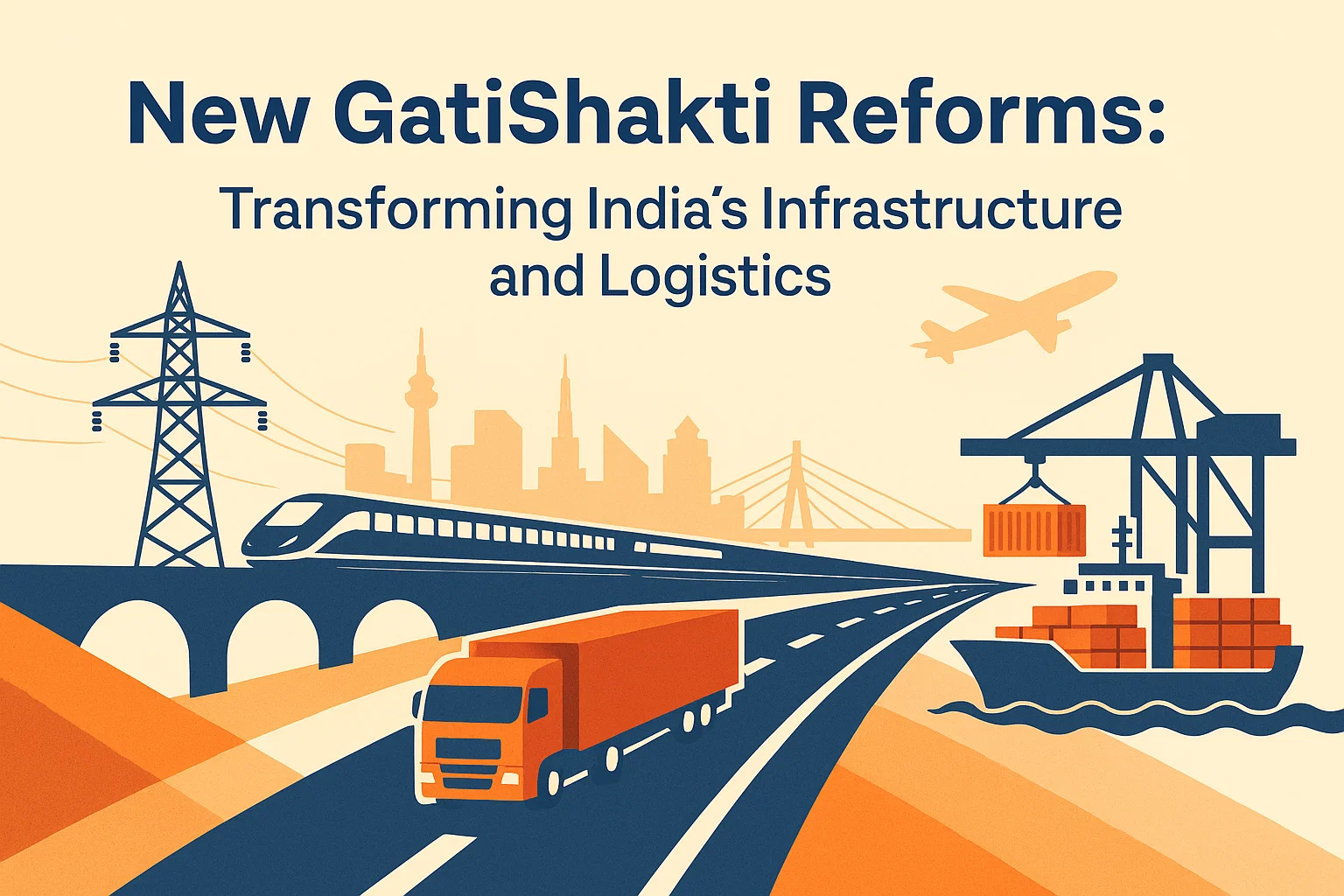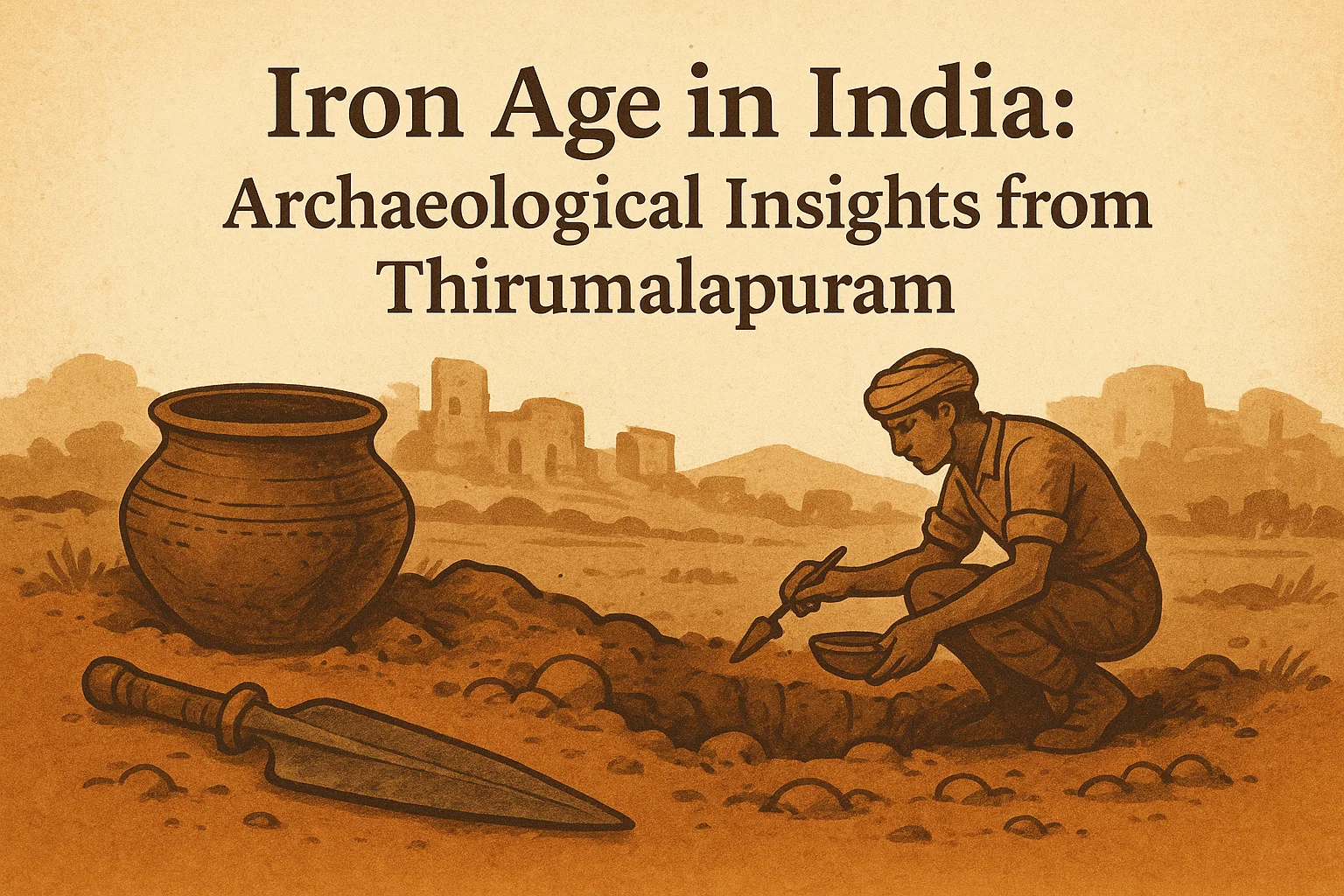Daily Current Affairs 15th July 2025
In this edition of Daily Current Affairs, we bring you concise and important updates on key national and international developments that are shaping the world today.
1) Why Is India Still Lagging Behind in Gender Equality?
2) ‘Ordinarily Resident’ in the Context of Electoral Rolls
3) The changing landscape of employment
4) Rethinking Deserts: From Wastelands to Vital Ecosystems
5) Species in News: Lion-Tailed Macaque
6) India’s Carbon Credit Trading Scheme
7) Alzheimer’s Disease and the Lipid Link in Microglia
Why Is India Still Lagging Behind in Gender Equality?
View India’s Gender Gap Report ranking as a warning
Context: India today stands as a digital leader, a rising economic power, and home to the world’s largest youth population. Yet, the Global Gender Gap Report 2025 by the World Economic Forum reveals a harsh reality: India ranks 131 out of 148 countries in gender parity.
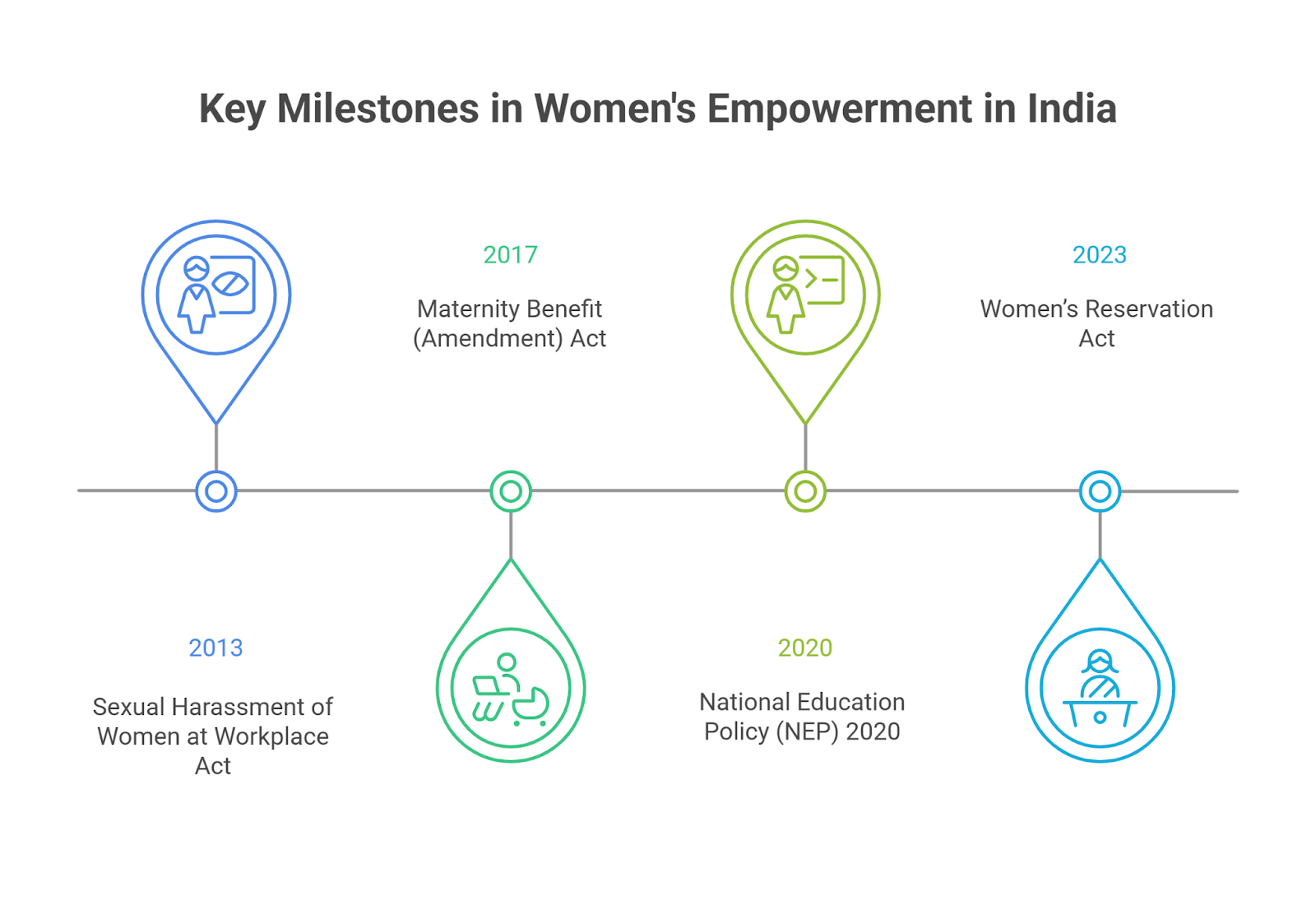
What Are the Structural Issues Behind India’s Low Gender Equality Ranking?
- Systemic Failures: India’s poor performance in the Economic Participation and Opportunity and Health and Survival sub-indices reflects more than just social disparities.
- These metrics expose systemic failures that limit women’s autonomy, agency, and well-being.
- Persistent Neglect: Despite some progress in female educational attainment, the report shows persistent neglect in areas like reproductive health, preventive care, and nutrition, especially among rural and low-income women.
- Sex Ratio: India’s sex ratio at birth remains one of the most skewed globally, underscoring a deep-rooted son preference.
- Life Expectancy: More concerningly, healthy life expectancy for women is now lower than that of men — a clear indicator of inequality in health access.
How Does Women’s Health Impact Economic Inclusion?
- According to NFHS-5, nearly 57% of Indian women aged 15–49 are anaemic, affecting their ability to study, work, or safely carry pregnancies.
- This is not just a public health concern — it’s an economic one.
- Without good health, women cannot participate meaningfully in the workforce.
- Increased investments in primary health care, particularly for women, are essential to unlock the demographic dividend.
Why Is Female Labour Participation So Low in India?
- India ranks 143rd in Economic Participation and Opportunity, with women earning less than a third of what men do, and female labour force participation stagnating.
- Despite a 2015 McKinsey Global Institute projection that bridging gender gaps could add $770 billion to India’s GDP by 2025, that opportunity has largely been missed.
- At the current pace, closing the economic gender gap could take over a century, and India is trailing behind even this global timeline.
What Role Does Unpaid Care Work Play in Gender Inequality?
- The Time Use Survey shows that Indian women perform nearly 7 times more unpaid domestic work than men.
- Yet, this invisible labour remains excluded from GDP calculations and underfunded in public policy.
- As women shoulder caregiving responsibilities, they are unable to enter or remain in the workforce, reinforcing the cycle of exclusion.
- Investing in care infrastructure — such as childcare centres, eldercare services, and maternity support — would enable millions of women to contribute to the economy.
- Countries like Uruguay and South Korea have already taken strides by integrating care economies into their development models.
How Will India’s Aging Population Affect Women and the Economy?
- India is approaching a demographic shift. While currently benefiting from a large youth population, by 2050, nearly 20% of Indians will be senior citizens — most of them elderly women, many widowed and dependent.
- Simultaneously, fertility rates have fallen below replacement levels, indicating a future where the working-age population shrinks and care demands rise.
- In such a scenario, excluding women from the workforce will increase the dependency ratio and strain fiscal resources.
- The only sustainable solution is to ensure women are healthy, economically active, and empowered.
What Should Be India’s Policy Priority for Gender Equality?
India has no shortage of schemes or slogans — from Beti Bachao, Beti Padhao to gender budgeting. But rhetoric needs to be matched by real investment:
- Strengthen public health systems to prioritise women’s needs
- Fund care infrastructure to reduce the unpaid burden on women
- Treat women not as passive beneficiaries, but as key economic contributors
‘Ordinarily Resident’ in the Context of Electoral Rolls
Who are qualified as ‘ordinarily resident’?
Context: The Election Commission of India (EC) has recently begun a Special Intensive Revision (SIR) of electoral rolls in Bihar, sparking intense debate around the interpretation of the term ‘ordinarily resident’ — a critical criterion for a citizen’s inclusion in the electoral rolls of a constituency.
Who Is Considered an ‘Ordinarily Resident’ Under Indian Law?
The term ‘ordinarily resident’ is governed by the Representation of the People Act, 1950 (RP Act):
- Section 19 states that a person must be “ordinarily resident” in a constituency to be enrolled as a voter there.
- Section 20 defines the term, clarifying that simply owning property does not make one an ordinarily resident.
- A person is still considered ordinarily resident if they are temporarily absent from their place of residence.
- There are special provisions for Armed forces members, Armed police personnel posted outside their home State, Indian government employees posted abroad and Holders of constitutional offices, as notified by the President in consultation with the EC.
- In such cases, these individuals and their spouses are treated as ordinarily resident in their original constituency.
- Further, Section 20A, added in 2010, allows Non-Resident Indians (NRIs) to register and vote in their passport-address constituency, even if they live abroad for extended periods.
How Are Electoral Rolls Prepared in India?
- The process of preparing and updating the electoral rolls is regulated by the Registration of Electors Rules, 1960 (RER).
- These rules are framed by the Central Government in consultation with the Election Commission, and are based on the provisions of the RP Act.
What Is the Legal Interpretation of ‘Ordinarily Resident’?
In the Manmohan Singh case (1999), the Gauhati High Court held that:
- ‘Ordinarily resident’ implies habitual and permanent residency, not just a casual or temporary stay.
- A person must have the intention to reside permanently in a place.
- A “reasonable man” should accept the person as a genuine resident of that place.
- This interpretation supports a strict view of residency, which can be problematic in today’s mobile society.
How Does the ‘Ordinarily Resident’ Clause Affect Migrant Labourers?
- India’s large population of internal migrants — especially labourers — faces serious challenges in exercising their voting rights.
- According to the Periodic Labour Force Survey (2020–21), around 11% of India’s population migrates for work — that’s nearly 15 crore people.
- Many migrants live in temporary shelters near worksites and move seasonally.
- While they work elsewhere, their families, homes, and community ties remain in their original place of residence.
- Despite not living full-time in their home constituency, their connection to that place aligns with the spirit of the term ‘ordinarily resident’.
- These individuals often do not wish to register in temporary workplaces, risking disenfranchisement if removed from rolls based on a strict interpretation of residency.
What Safeguards Exist for Other Non-Residents — and Should Migrant Workers Get the Same?
- The RP Act already allows service voters, government employees abroad, and NRIs to remain on their home constituency rolls, even if not residing there permanently.
- Although migrant labourers are not identical in status, the principle is the same: they maintain a strong emotional and familial connection with their original home.
- Their migration is typically involuntary, caused by the lack of local employment.
- Recognising this unique context, the law should ensure migrant workers retain the choice to vote from their native place — just like other categories of non-residents.
What Is the Way Forward for Ensuring Voting Rights of Migrants?
To uphold inclusive democracy, India needs a progressive and pragmatic approach:
- Amend the RP Act or RER to define ‘ordinarily resident’ in a way that includes seasonal and economic migrants.
- Enable choice: let migrant labourers retain their vote in their home constituency, if desired.
- Address duplication concerns through Aadhaar-linked electoral rolls, not voter suppression.
- Develop portable voting mechanisms or remote voting solutions for migrants to vote without needing relocation.
The changing landscape of employment
Employment Crisis in India: Urgent Reforms Needed to Bridge the Skill Gap
Context: India is facing a growing mismatch between education and employment, with 83% of the unemployed being youth, many of whom are graduates lacking job-ready skills. Despite rising formal employment, most jobs remain informal and insecure.
What is the current state of employment in India?
As per the India Employment Report 2024 (ILO + Institute for Human Development), youth account for 83% of India’s unemployed population, despite forming only one-third of the working-age population.
- Informalisation persists: Nearly 90% of India’s workforce remains in the informal sector.
- Decline in regular jobs: Since 2018, salaried and regular jobs have been shrinking, with a rise in contractual and gig-based employment.
- Formalisation trend: EPFO data (March 2025) shows a rise in formal employment, especially among the 18–25 age group, signalling efforts toward formalisation.
However, this doesn’t reflect job quality, stability, or social security.
Why is India facing such high youth unemployment despite having a demographic dividend?
- Mismatch between education and employability: This is not just a problem of unemployment, but unemployability.
- Only 50% job-ready: As per the Economic Survey 2023–24, only half of graduates are job-ready.
- Digital illiteracy:
- 75% of youth cannot send an email with an attachment.
- 90% cannot use basic spreadsheet functions (India Employment Report 2024).
- Poor industry-academia linkage: Curricula remain outdated, theoretical, and disconnected from real-world requirements.
When did this crisis deepen, and what role did COVID-19 play?
- Post-pandemic decline: Net EPFO enrolments fell sharply post-2019 due to widespread job losses in the formal sector.
- Slow recovery: By 2025, data indicates a rebound in formal employment, especially among fresh graduates, but structural problems persist.
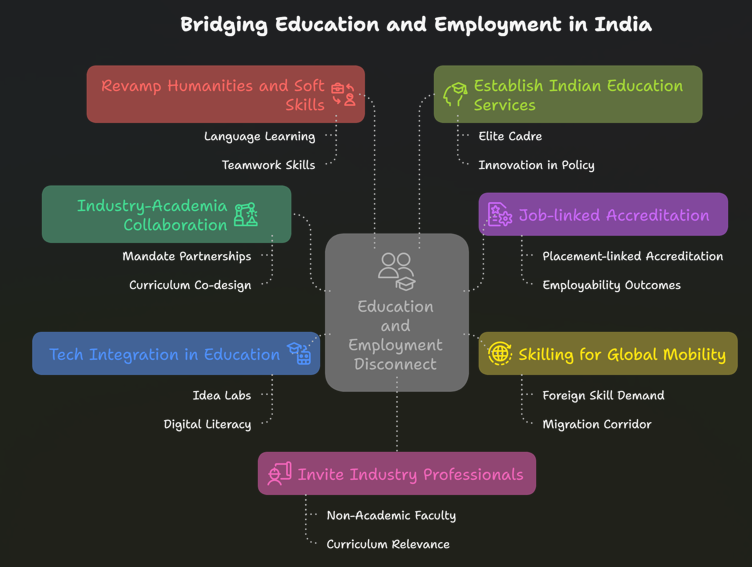
Who is most affected by the changing employment landscape?
- Educated youth: The unemployment rate among graduates is significantly higher than among those with no schooling (CMIE data).
- Women and rural youth face compounded challenges due to limited opportunities, digital divide, and mobility issues.
- As per Periodic Labour Force Survey (PLFS) 2022–23:
- Urban youth (15-29) unemployment: 17.9%
- Female youth unemployment is nearly double that of males.
Where does India stand globally in terms of future job trends and preparedness?
- India is not fully prepared for global job shifts and future skill demands.
- According to the World Economic Forum’s Future of Jobs Report 2025:
- By 2030, 170 million jobs will be created globally, but 92 million will be displaced.
- Net job growth: 78 million (7%).
- India risks missing out if it doesn’t urgently bridge the skill gap.
- Additionally, Western countries facing ageing populations will require young, skilled migrants — an opportunity India is not fully leveraging due to poor international alignment of skills.
Rethinking Deserts: From Wastelands to Vital Ecosystems
Why must India recognise its open ecosystems?
Context: Deserts are often misrepresented as barren wastelands — failures of nature in urgent need of “fixing.” This worldview fuels massive projects aimed at “greening” deserts through afforestation, irrigation, or climate engineering. Such actions are based on the misconception that deserts are broken ecosystems.
Open ecosystems, such as savannas, grasslands, and shrublands, are areas with a continuous layer of grasses and little or no tree cover. In some places, they also support shrubs and herbs, depending on the environment. They are found in tropical, subtropical, and temperate regions and include a wide range of landscapes and vegetation types. These ecosystems are important for their unique biodiversity and the essential services they provide, such as climate regulation, water management, carbon storage, and resources like food and fuel. They also hold deep cultural and economic significance, having supported human life and livelihoods for thousands of years.
What Are Deserts, and Why Are They Misunderstood?
- Deserts are ancient, diverse, and resilient biomes, covering nearly one-third of Earth’s land surface.
- Often wrongly seen as “barren wastelands”, leading to misguided efforts like afforestation and irrigation to “fix” them.
- Desertification (land degradation) is mistakenly equated with deserts, reinforcing negative perceptions.
- June 17: Observed as World Day to Combat Desertification and Drought, further stigmatising deserts.
How Have Deserts Shaped Human Civilisation?
- Early civilisations (Mesopotamia, Egypt, Indus Valley) thrived in desert climates.
- Harsh conditions drove innovation (e.g., irrigation, agriculture) and complex societies.
- Modern disregard for deserts ignores their ecological and cultural significance.
What Is India’s Contradictory Relationship with Open Ecosystems?
- Romanticising vs. Neglecting Open Spaces:
- Urban fetishisation: Real estate ads glorify open spaces with names like Savana or Utopia, promising lush lawns and scenic views.
- Ecological disregard: In contrast, India’s natural open ecosystems are ignored or erased in policy and planning.
- Mislabeling and Mismanagement: Colonial legacy: Millions of hectares of grasslands, deserts, and scrublands are labelled as “wastelands”—a term inherited from colonial land-use classifications.
Why Are These Ecosystems Ecologically Crucial?
- Unique biodiversity: Home to endangered species like: Great Indian Bustard, Caracal, and Indian wolf.
- Carbon storage: Not in trees, but deep in soil, making them vital for climate mitigation.
- Livelihoods for pastoralists: Dhangar, Rabari, and Kuruba communities depend on grazing. Their traditional knowledge sustains ecosystem health. These communities often act as biodiversity stewards, yet receive little recognition or support.
What Are the Consequences of Mismanagement?
- Tree plantations in grasslands disrupt natural food webs, reduce habitat diversity, and promote invasive species.
- Afforestation in these areas can release stored soil carbon, undermining climate goals.
- Poor land-use practices lead to erosion, salinisation, and loss of fertility. Heavy machinery and chemical inputs destroy microbial life essential for soil health.
- Fencing and afforestation restrict mobility, livelihoods, and traditional land stewardship.
What Should Be the Way Forward?
- Policy Changes Needed:
- Recognise ecosystem diversity: Stop classifying deserts/grasslands as “wastelands.”
- Reward soil carbon storage: Incentivise conservation of natural carbon sinks.
- Support pastoralism: Legally protect grazing rights and indigenous land management.
- Sustainable Restoration Practices:
- Low-tech, high-impact solutions: Water harvesting, Rotational grazing, Natural regrowth protection.
- Avoid “greenwashing”: Mass tree-planting often fails in arid regions.
- Rethinking Global Perceptions: Rename World Day to Combat Desertification and Drought to “World Day to Combat Land Degradation” to stop vilifying deserts. Celebrate deserts as functional, living ecosystems, not “failed” landscapes.
Species in News: Lion-Tailed Macaque
In-principle nod to Sharavathi Valley hydel project in endangered lion-tailed macaque sanctuary
Context: The Standing Committee of the National Board for Wildlife (NBWL) has granted in-principle approval for the diversion of 142.76 hectares of forest land in the Sharavathi Valley Lion-Tailed Macaque Wildlife Sanctuary, Karnataka.
A Sanctuary Under Threat
- The Sharavathi Valley sanctuary, nestled in the Western Ghats — a UNESCO World Heritage Site — is home to an estimated 700 lion-tailed macaques, the highest population of this endangered primate in any protected area.
- Globally, only around 2,500 individuals of this species remain in the wild, and their numbers continue to decline, according to the International Union for Conservation of Nature (IUCN).
- Despite this, the sanctuary faces an imminent threat from the proposed Sharavathi Pumped Storage Hydroelectric Project (2,000 MW), to be implemented by the Karnataka Power Corporation Limited (KPCL) in Shivamogga and Uttara Kannada districts.

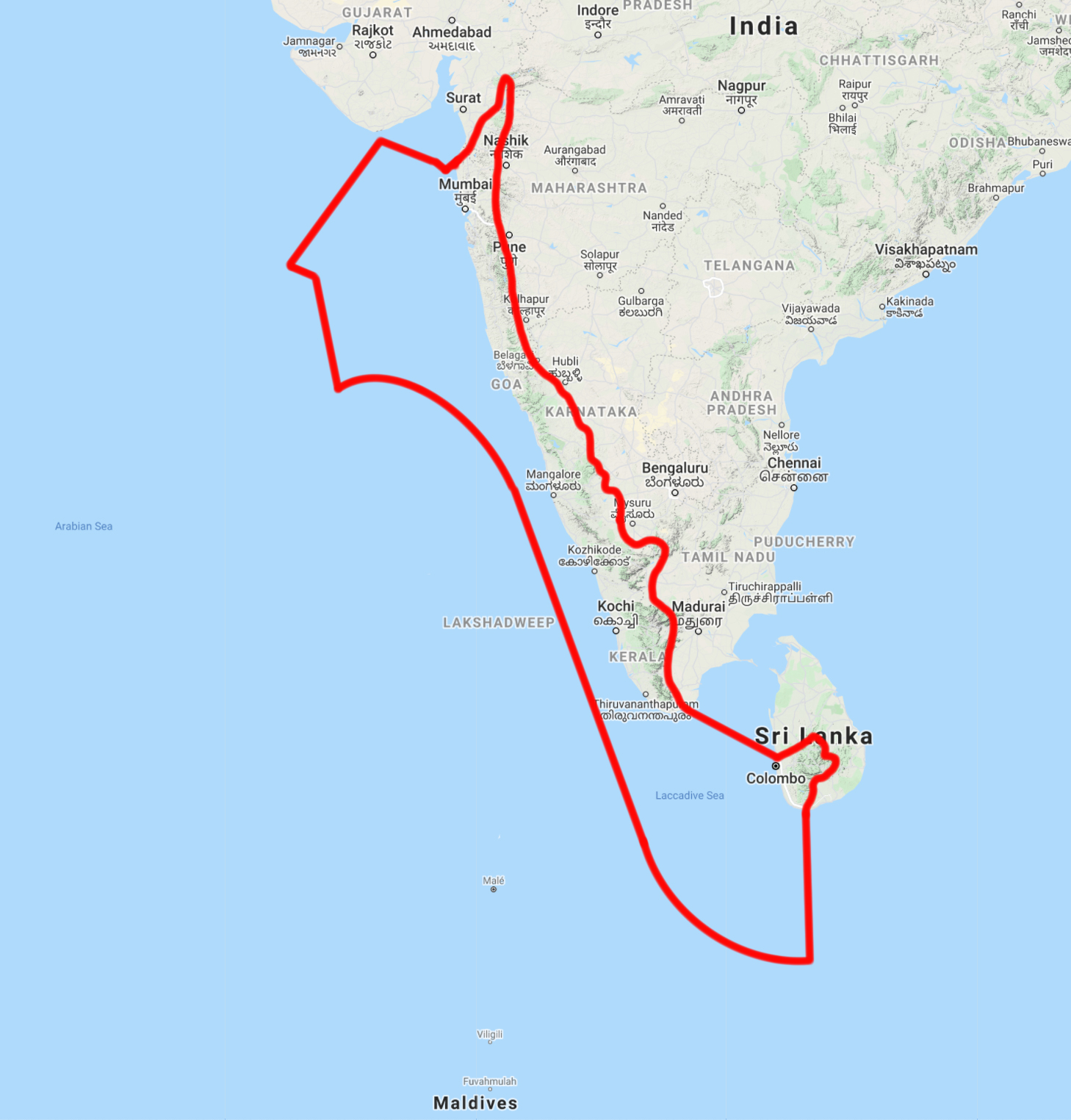
About Lion-Tailed Macaque
-
- Scientific Name: Macaca silenus
- Common Names: Lion-tailed macaque, Wanderoo, Bearded Monkey
- Distinctive Feature: Black fur with a gray/silver mane around the face – gives rise to the nickname “beard ape”.
- The animal weighs between 2–10 kg, has a body length of 42–61 cm, and a tail about 25 cm long with a distinctive black tuft, which is more prominent in males.
- Geographic range: Endemic to the Western Ghats of India — specifically Karnataka, Kerala, and Tamil Nadu.
- Habitat: Upper canopy of tropical moist evergreen rainforests.
- Diet: Omnivorous, with a preference for: Fruits and seeds. Also consume leaves, buds, insects, and small vertebrates.
- Ecological Role: Help maintain forest health through seed dispersal and predator-prey dynamics.
- Social Behaviour: Shy and solitary tendencies, but live in hierarchical groups of 10–20 individuals.
Dominant males emit loud ‘whoops’ to signal territory presence and warn intruders.
- Conservation Status:
- IUCN Red List: Endangered
- CITES: Appendix I
- Wildlife (Protection) Act, 1972 (India): Schedule I
- Threats: Due to Logging, Agricultural expansion, and urbanisation.
- Mitigation and Conservation Measures:
-
- Nature Conservation Foundation (NCF): Created canopy corridors, Regulations to prevent feeding and reduce roadkill.
- Tamil Nadu Government Initiatives:
- Endangered Species Conservation Fund: ₹50 crore corpus
- Plan for a population estimation study and a comprehensive conservation strategy
- Emphasis on habitat protection and connectivity
India’s Carbon Credit Trading Scheme
Assessing India’s carbon credit trading scheme targets
Context: The Indian government has set greenhouse gas emissions intensity of production targets for entities in eight heavy industrial sectors under the CCTS compliance mechanism: Aluminium, Cement, Paper and Pulp, Chlor-alkali, Iron and Steel, Textile, Petrochemicals, and Petro Refineries. These targets regulate the emissions per unit of production (emissions intensity).
What is the Carbon Credit Trading Scheme (CCTS)?
-
- India’s CCTS, launched in July 2024, establishes a rate-based Emissions Trading System (ETS) covering nine energy-intensive sectors, including aluminium, cement, iron & steel, petrochemicals, petroleum refineries, pulp & paper, fertiliser, textiles, and chlor‑alkali.
-
It operates via two key mechanisms:
-
- Compliance mechanism: Obligated entities—mostly industrial facilities—must meet government-set greenhouse gas (GHG) intensity targets (emissions per unit of output). Facilities that emit less than their target earn Carbon Credit Certificates (CCCs); those that emit more must surrender or buy CCCs to cover the excess.
- Offset mechanism: A voluntary, project-based system open to non-obligated entities. They can register emission‑reduction projects—such as renewable energy, afforestation, or methane capture—to earn CCCs.
How Is Ambition Measured in Carbon Markets?
- To assess ambition, the key issue is whether to evaluate targets at the entity, sector, or economy-wide level. Experts argue:
- Economy-wide aggregate emissions intensity should be the benchmark.
- Sector or entity-level targets mainly determine financial transfers, not real-world emissions outcomes.
- Market mechanisms, like emissions trading, inherently focus on collective environmental benefits rather than uniform performance.
Learnings from the PAT Scheme
- India’s Perform, Achieve and Trade (PAT) Scheme is a pioneering market-based mechanism aimed at improving energy efficiency in energy-intensive industries.
- Launched in 2012 by the Bureau of Energy Efficiency (BEE) under the National Mission for Enhanced Energy Efficiency (NMEEE), PAT is a cornerstone of India’s strategy to reduce industrial emissions and promote sustainable growth.
- Under PAT Cycle I (2012–14): Some sectors (e.g., paper, chlor-alkali) saw increased energy intensity. Others (e.g., aluminium, cement) achieved efficiency gains.
- Yet, at the aggregate level, energy use declined per unit of output, showing that market mechanisms can work effectively. This suggests: even with diverse sectoral performance, overall targets can be met.
How do current CCTS targets compare with future climate goals?
- A recent modelling of India’s 2030 Nationally Determined Contributions (NDC) -aligned pathway provides comparative context:
- The energy sector’s emissions intensity is expected to decline at 3.44% per year (2025-2030).
- The manufacturing sector’s emissions intensity is projected to decline by at least 2.53% per year.
- By contrast, the average annual emissions intensity reduction from the current CCTS targets for the eight sectors is estimated at only 1.68% (2023-24 to 2026-27).
- The current targets appear less ambitious than what is required for alignment with India’s NDCs and net-zero vision. Particularly concerning is the fact that industry decarbonisation may lag behind sectors like power, which have lower-cost mitigation options.
Limitations and Considerations
- CCTS only covers a subset of India’s industrial base, so aggregate comparisons are not perfectly equivalent.
- Sectoral targets cannot be judged solely by past performance (e.g., under PAT) — future ambition is key.
- Detailed sector-wide modelling and dynamic baseline updates are needed for continuous alignment with climate goals.
Alzheimer’s Disease and the Lipid Link in Microglia
Immune cells’ fat blocks brain’s ability to clean Alzheimer’s plaques
Context: A study published in Immunity by researchers led by Gaurav Chopra at Purdue University explored the link between lipid metabolism in microglia and Alzheimer’s. This research reveals that fat accumulation in microglia may impair their function and drive disease progression.
What is Alzheimer’s Disease?
- Alzheimer’s disease is a progressive brain disorder and a form of dementia.
- It affects memory, thinking, and behaviour.
- The disease is associated with accumulation of two toxic proteins: Amyloid-beta (Aβ), Tau. These proteins cause damage to nerve cells.
- As it worsens, it impairs basic routine tasks like brushing teeth, cooking, or recognising loved ones.
Global Impact of Alzheimer’s
- In 2021, an estimated 57 million people worldwide were affected by dementia.
- Alzheimer’s accounts for 60–70% of these cases.
- There is no known cure, but treatments exist to slow symptoms and improve quality of life.
Role of Microglia and Lipid Droplets
- In healthy brains, microglia clear waste and toxic proteins such as Aβ.
- In Alzheimer’s, microglia fail to clear Aβ, leading to plaque accumulation.
- The study focused on DGAT2, an enzyme that converts free fatty acids into triacylglycerols (TAGs) stored in lipid droplets.
- In Alzheimer’s-affected brains (both mouse models and human samples), microglia near plaques showed:
- High DGAT2 expression
- Increased lipid droplets, especially in the hippocampus (memory center)
Mechanism
- Aβ exposure triggers fatty acid conversion into stored fats.
- Over time, lipid buildup disrupts microglia’s ability to clear Aβ, creating a vicious cycle: More plaques → More fat → More dysfunction.
- Sex-based difference: Female mice showed more lipid accumulation and worse impairment, aligning with higher Alzheimer’s risk in women.
- Imaging, lipidomic, and metabolomic analyses showed this metabolic change over time.
Experimental Approach and Results
- Researchers used 5xFAD mice, a genetically modified Alzheimer’s model.
- Two strategies were tested to reduce DGAT2 activity:
- Pharmacological inhibitor (in clinical trials for fatty liver disease)
- Microglia-specific PROTAC-like degrader targeting DGAT2
Results:
- Reduced fat accumulation
- Restored microglial function
- Over 50% reduction in plaque burden
- Significant decrease in neuronal damage markers
- Even a one-week treatment in aged mice showed dramatic improvements
What Are the Limitations?
- The 5xFAD mouse model is based on accelerated Aβ pathology.
- Results may not apply equally to all forms or stages of Alzheimer’s.
- DGAT2 is expressed in many cell types, so systemic targeting could cause side effects.
- The microglia-specific degrader is a proof-of-concept, not yet a full therapy.
Why Are Lipid Droplets a Problem in Alzheimer’s?
- Lipid droplets are normally protective, storing fats during cell stress.
- But with chronic Aβ exposure, they become detrimental, leading microglia to lose their immune function.
- Microglia trade immune defence for lipid storage, possibly a key step in disease progression.
Where Does This Fit in Alzheimer’s Research?
- Adds a new dimension to Alzheimer’s understanding: Integrates metabolic dysfunction with immune cell impairment.
- Complements other theories involving: Amyloid and tau, Neuroinflammation, and Cellular metabolism.
Subscribe to our Youtube Channel for more Valuable Content – TheStudyias
Download the App to Subscribe to our Courses – Thestudyias
The Source’s Authority and Ownership of the Article is Claimed By THE STUDY IAS BY MANIKANT SINGH



